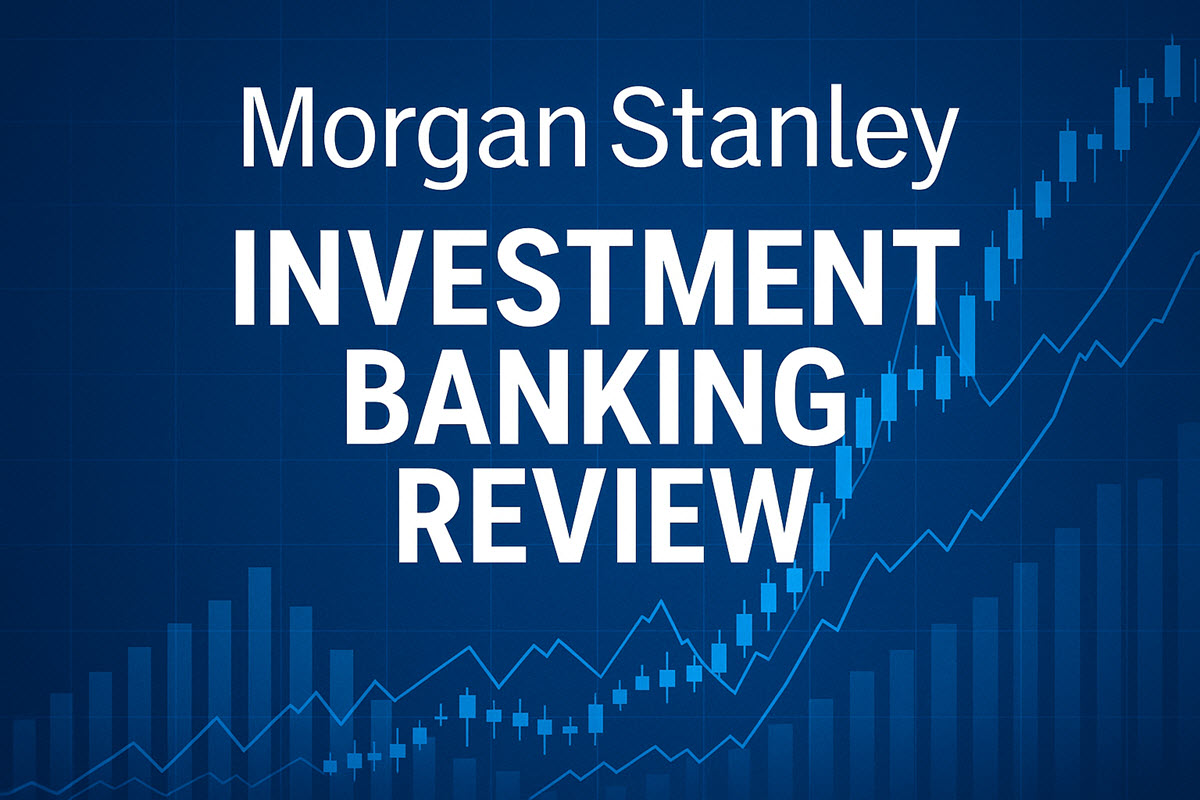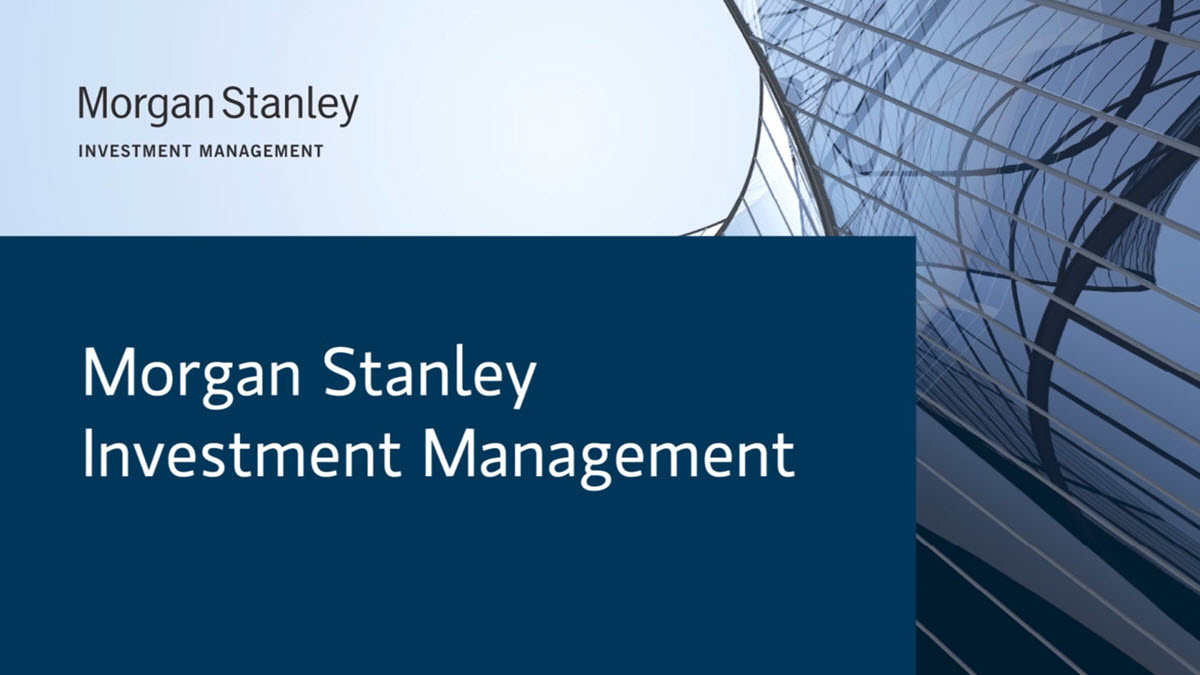Investment banking is where complex corporate dreams become real. From taking a company public to advising billion-dollar mergers, it takes expertise, precision, and global reach. That’s exactly what Morgan Stanley investment banking brings to the table.

In this review, we take a closer look at Morgan Stanley investment banking division in 2025, including what it does, how it works, and why it’s still a global leader.
Overview of Morgan Stanley Investment Banking Division
When it comes to trusted names in global finance, Morgan Stanley stands out for its long history, strategic expertise, and commitment to innovation.
Company Overview
Founded in 1935, Morgan Stanley is a global financial services firm headquartered in New York City. It operates in over 40 countries, employing more than 80,000 people. The firm is best known for its three core business segments: Wealth Management, Investment Management, and Institutional Securities.
A Legacy of Wall Street Leadership
Morgan Stanley has played a crucial role in shaping global finance. From its early involvement in major corporate IPOs to its resilience through market crises, the firm has earned its place among the most respected names on Wall Street. It’s listed on the New York Stock Exchange under the ticker MS and continues to be a trusted partner for companies, governments, and investors worldwide.
About Morgan Stanley Investment Banking Division
At the heart of Morgan Stanley investment banking is its Institutional Securities Group, a team dedicated to helping businesses manage complex financial goals. This group offers a wide range of advisory and capital-raising services. It includes mergers and acquisitions (M&A), initial public offerings (IPOs), equity and debt financing, and corporate restructurings.
What sets Morgan Stanley apart is its integrated approach. In addition to investment banking, the firm offers global trading services, in-depth market research, and access to capital markets. This means clients can handle everything from raising funds to executing trades under one roof.
With a presence across the Americas, Europe, Asia-Pacific, and Latin America, Morgan Stanley serves clients from every major region. Its clients range from large multinational corporations to sovereign governments and major private equity firms. The bank’s teams are structured to offer both global scale and local insights.

Core Services of Morgan Stanley Investment Banking
To meet the evolving needs of global clients, Morgan Stanley investment banking provides essential services that drive major transactions and long-term growth. Here’s what they do:
Mergers & Acquisitions (M&A)
Morgan Stanley is a powerhouse in M&A advisory. The firm handles both buy-side and sell-side deals. Whether it’s a company looking to expand globally or an enterprise aiming to spin off a division, Morgan Stanley brings strategic insight and executional excellence.
Notable past deals include the Microsoft acquisition of LinkedIn and the London Stock Exchange’s purchase of Refinitiv. These deals highlight Morgan Stanley’s role in transformative transactions.
Equity Capital Markets (ECM)
Morgan Stanley investment banking leads the way in helping companies raise funds through equity offerings. This includes IPOs, follow-on offerings, and convertible bonds. Tech companies, in particular, often turn to Morgan Stanley to guide their public debuts. Its recent success stories include several unicorn IPOs and cross-border equity listings.
Debt Capital Markets (DCM)
Debt financing is another strength. Morgan Stanley structures investment-grade and high-yield bonds, as well as syndicated loans. Their team also handles structured products, securitizations, and green bonds. Clients benefit from both market reach and deep investor relationships.
Restructuring & Recapitalization
In tough times, companies call Morgan Stanley for restructuring advice. This includes debt renegotiation, distressed M&A, and strategic recapitalization. Post-COVID, the bank helped several travel and retail giants manage complex recoveries.
Sustainable Finance & ESG Advisory
Sustainability matters more than ever. Morgan Stanley offers ESG advisory services, helping clients issue sustainability-linked bonds and incorporate ESG metrics into their financing and deal strategies. This aligns with a growing demand from institutional investors.

Types of Morgan Stanley Investment Accounts
There are several of Morgan Stanley investment account options tailored to different client needs:
- Brokerage Account: For clients who want to actively trade or invest independently. You can buy and sell a variety of securities on your own.
- Managed Investment Account: Professionally managed by Morgan Stanley’s team. Ideal for clients who prefer expert management based on personalized strategies.
- Retirement Accounts: Including Traditional IRA, Roth IRA, and Rollover IRA options. These accounts help you save for retirement with potential tax benefits.
- 529 College Savings Plan: Designed for families planning to fund education costs. These accounts offer tax advantages when used for qualified education expenses.
- Trust and Estate Accounts: Investment accounts that are part of estate or wealth transfer planning. Useful for high-net-worth individuals and families.
Why Choose Morgan Stanley Investment Banking?
Choosing the right investment bank can make a big difference in your financial success. Here’s why Morgan Stanley investment banking continues to be a top choice for corporations, personal investors, and institutions:
A Top-Tier Global Player
Morgan Stanley is part of the “bulge bracket”, a group of the world’s biggest and most powerful investment banks. According to Dealogic and Refinitiv, Morgan Stanley consistently ranks in the top three for equity underwriting and global M&A advisory. Its performance in U.S. capital markets is especially strong.
The firm has also received numerous awards, including “Best Investment Bank in North America” and “Global M&A House of the Year” from Euromoney and IFR.
Moreover, according to the latest financial reports (Q1 2025), Morgan Stanley Investment Management (MSIM) manages approximately $1.5 trillion in AUM. A higher AUM typically indicates greater scale, trust, and influence in the asset management industry.
This elite status means the firm often leads some of the largest financial deals worldwide.
Proven Track Record in Big Transactions
In 2024 alone, Morgan Stanley advised on over $300 billion worth of M&A activity.
In the first quarter of 2025, Morgan Stanley investment banking operations showed its strength:
- Ranked 4th in global investment banking revenue
- Acted as lead advisor in Walgreens’ $24 billion take-private transaction
- Underwrote CoreWeave’s $1.5 billion IPO, one of the year’s most anticipated tech offerings
- Reported an 8% increase in banking revenue despite a tough market
These numbers prove that the bank can handle complex, high-value deals across industries and borders.
A Wide Range of Financial Services
Morgan Stanley doesn’t just stop at investment banking. Clients also get access to:
- Expert market research with insights into global economies and key sectors
- Sales and trading services that connect clients to major markets worldwide
- Wealth and investment management tailored for high-net-worth individuals and family offices
This all-in-one model gives clients both deep expertise and unmatched convenience. Whether you’re a Fortune 500 company or a growing business, Morgan Stanley offers the tools to scale and succeed.
Cross-Divisional Synergies
Morgan Stanley doesn’t operate in silos. Its investment banking team works closely with its research analysts, wealth managers, and asset managers to deliver integrated solutions. This approach gives clients a 360-degree perspective on deals.
Global Network and Deep Sector Expertise
From Silicon Valley startups to Asian manufacturing giants, Morgan Stanley’s sector teams understand industry nuances. Their sector-specific bankers provide targeted advice, whether it’s healthcare, energy, real estate, or technology.

How to Use Morgan Stanley Investment Banking Services
Now, if you’re considering Morgan Stanley as a financial partner, understanding how to start that relationship is the first step toward a successful deal.
Who Are Their Ideal Clients of Morgan Stanley Investment Banking?
Morgan Stanley investment banking division is built to serve organizations with complex needs and large-scale ambitions. Their typical clients include Fortune 500 companies, multinational corporations, government agencies, sovereign wealth funds, and major institutional investors such as private equity firms or pension funds. These clients often look for expert help in navigating mergers, public offerings, debt restructuring, and other high-stakes financial transactions.
While Morgan Stanley has a strong global presence, it does not typically serve small businesses or early-stage startups. The bank focuses on deals that require deep market insight, large capital deployment, and customized financial strategies. If your organization is exploring a transformative move, Morgan Stanley investment banking is well-equipped to guide you.
Morgan Stanley Investment Account Minimum
The minimum amount needed to open an investment account with Morgan Stanley depends on the type of service and account selected:
- Self-directed accounts: These may have lower or no minimums if opened through E*TRADE (now part of Morgan Stanley).
- Advisory or managed accounts: Typically require a minimum investment of $25,000 to $250,000, depending on the level of service and access to premium strategies.
- Private Wealth Management: For ultra-high-net-worth clients, the minimum could exceed $1 million.
If you’re unsure which tier you fall into, it’s best to speak with a Morgan Stanley advisor for tailored guidance.
How to Open A Morgan Stanley Investment Account
Partnering with Morgan Stanley usually follows a clear, structured process, designed to ensure that each deal is carefully tailored and professionally managed.
- Initial Consultation: Visit the official website or call a local office to request a meeting with a financial advisor. It all starts with a discovery call or meeting, where the bank’s team learns about your business goals and challenges
- Discuss Your Goals: During your consultation, you’ll talk about your financial objectives, risk tolerance, time horizon, and asset preferences.
- Complete the Application: You’ll fill out paperwork, either in person or digitally, including identity verification and financial disclosures.
- Fund Your Account: You can transfer money via bank transfer, check, or roll over existing accounts. There’s no minimum for basic brokerage accounts, but advisory services may have thresholds (e.g., $25,000+).
- Start Investing: Once your account is active, you can start investing independently, or with a Morgan Stanley advisor managing your portfolio through one of their advisory programs.
Throughout this journey, clients receive personalized support and regular updates, with every stage being led by professionals who specialize in the relevant industry or region.
Key Contact Channels of Morgan Stanley Investment Banking
Reaching out to Morgan Stanley is straightforward. There are two main ways to initiate contact:
- Global Offices: Morgan Stanley operates in over 40 countries, with offices in key financial hubs such as New York, London, Hong Kong, Tokyo, and Frankfurt. These offices are staffed by regional teams who understand local markets, regulations, and business cultures. If you’re based in one of these regions, contacting a nearby office is a practical starting point.
- Official Website: For global access, their corporate website offers an overview of services, recent transactions, and contact information. From there, you can fill out a form or reach specific departments through listed emails or phone numbers.
In many cases, senior bankers or client relationship managers will arrange a preliminary conversation to assess fit and needs. Morgan Stanley’s responsiveness, professionalism, and clarity make the first steps in engagement smooth and reassuring for new clients.

Morgan Stanley Investment Banking Rates and Fees
Actually, this bank doesn’t use fixed pricing. Instead, Morgan Stanley investment banking fees are customized based on account type, deal size, complexity, and service level.
Here’s a quick look at estimated ranges:
Estimated Fee Structure for Morgan Stanley Investment Banking Services
| Service | Fee Type | Typical Range |
|---|---|---|
| M&A Advisory (Sell-Side) | Success Fee | 0.5% – 2.0% of deal value |
| M&A Advisory (Buy-Side) | Retainer + Success | $250K+ retainer + 0.3% – 1.0% fee |
| IPO (Equity Underwriting) | Underwriting Fee | 3% – 7% of capital raised |
| Debt Capital Markets (DCM) | Underwriting Fee | 0.2% – 1.0% of issuance |
| Private Placements | Advisory Fee | 1% – 5% of capital raised |
| Restructuring / Recapitalization | Advisory Fee | $500K+ base + 0.5% – 1.5% success fee |
| ESG Advisory | Project-Based Fee | $100K – $1M+ |
| Monthly Retainers | Flat Fee | $50K – $250K/month |
| Expense Reimbursement | Pass-through | Billed at cost |
Disclaimer: The fee ranges provided are for informational purposes only and may vary based on deal specifics, market conditions, and client negotiations. Actual fees are determined case by case and subject to formal agreement with Morgan Stanley.
And here are the types of Morgan Stanley investing fees that every client should be aware of:
Morgan Stanley Investment Account Fees
Morgan Stanley’s account fee structure varies by account type and service level:
Trading Commissions and Transaction Fees
For brokerage accounts, you may pay:
- Commissions on trades, especially for stocks, mutual funds, or bonds.
- Other transaction costs, such as transfer or wire fees.
Note: Some trades, like ETFs or online equity orders, may qualify for commission-free trading, especially if done through the E*TRADE platform.
Platform and Custodial Fees
Depending on your account, Morgan Stanley may charge:
- Annual account maintenance fees
- Custody fees for holding certain assets
- Service fees for special requests (e.g., paper statements or check processing)
Morgan Stanley Investment Advisory Fees
If you’re working with a Morgan Stanley financial advisor, advisory fees typically apply. These fees are often based on a percentage of assets under management (AUM).
Typical Advisory Fee Range:
- 0.50% to 2.00% annually, depending on account size, complexity, and service tier.
- Some advisory accounts have tiered pricing, meaning the percentage goes down as your account grows.
- Additional program or strategy fees may apply, depending on the type of portfolio management used (e.g., custom portfolios, ESG-focused strategies, or multi-asset allocations).
It’s important to ask your advisor for a full fee disclosure document, which outlines all charges in detail.

Tips for Potential Clients
Working with Morgan Stanley can offer powerful advantages, but it’s important to approach the relationship with clarity and preparation. Here are a few smart tips to help you get the most from their services:
- Choose the right advisor: Not all advisors are the same. Take time to review your advisor’s experience, credentials, and communication style. A strong fit can make a big difference in long-term results.
- Ask about fees upfront: Morgan Stanley may charge based on assets under management (AUM), commissions, or both. Always request a clear breakdown of all fees so you’re not caught off guard.
- Understand potential conflicts of interest: Know the difference between broker-dealer and fiduciary roles. This helps you see whether recommendations are in your best interest or driven by commission incentives.
- Take full advantage of the platform: Morgan Stanley’s global scale gives clients access to exclusive IPOs, private equity deals, credit lines, and market opportunities that smaller firms may not offer.
- Use their research to your advantage: The firm offers high-quality market analysis and economic insights. Review these regularly to make smarter financial decisions and better time your investments.
FAQs About Morgan Stanley Investment Banking
How much does Morgan Stanley charge for investment banking services?
- Fees vary depending on the deal’s size and complexity. Typical structures include success fees (0.5%–2% of deal value), retainers ($250K+), and underwriting fees (3%–7% for IPOs). Exact pricing is negotiated per engagement.
Who are Morgan Stanley’s typical clients?
- Large corporations, institutional investors, private equity firms, and governments.
What sectors does Morgan Stanley specialize in?
- Tech, healthcare, energy, financial services, real estate, and consumer goods.
Is Morgan Stanley good for IPOs and M&A deals?
- Yes. Morgan Stanley is a top-tier global advisor for IPOs and M&A. It consistently ranks among the top 3 banks in league tables and is trusted for high-profile transactions, especially in the tech, healthcare, and financial sectors.
How do I contact Morgan Stanley investment banking team?
- You can reach out through their official website or contact a regional office directly.
Morgan Stanley investment banking division is more than just a dealmaker. It’s a strategic partner for organizations aiming high. In 2025, it continues to stand out for its innovation, experience, and ability to deliver results at the highest level. For those seeking a global, full-service financial partner, Morgan Stanley remains a strong contender.
